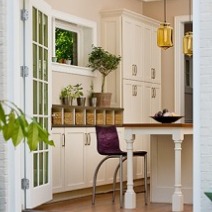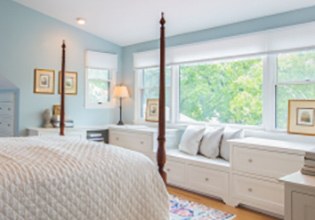Home Additions in Washington, DC
When you love your house and your neighborhood, a home addition is a good way to solve space issues in your current home. Unfortunately, with the complexities of Washington, DC zoning laws, designing and building a home addition can be a difficult process and it is essential that you work with a professional design/build firm who can walk you through the process.
In the Zone: Zoning in Washington, DC
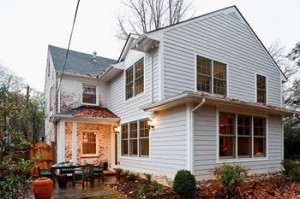
A well-designed addition to your home means more space and value
Washington, DC zoning regulations are tricky to navigate, but don’t let the complexities make you hesitant about building home additions! Wentworth can help you work through the complicated restrictions. Because DC zoning laws were passed in 1958, a home built prior to 1958 might be able to make use of certain exemptions. Such exemptions can be extremely helpful for homeowners with older homes or homes with small lots, mainly because the exemptions allow additional lot coverage and reductions in side yards. Occasionally approval will require paperwork in the form of a Special Exemption, which is obtained from the DC Zoning Administrator.
It’s imperative to check with a professional who can properly investigate the zoning laws since they may affect your property. Each home addition project’s zoning has to be studied on a case-by-case basis, and the Wentworth design/build team works with each homeowner to carefully determine the requirements.
History in the Making: Zoning Laws in Washington, DC Historic Districts
From Cleveland Park to Woodley Park to LeDroit Park to Capitol Hill, Washington, DC is home to a large number of historic districts, many of which are monitored by the DC Historic Preservation Office. Several historic districts, specifically Georgetown and portions of Capitol Hill that are within the Capitol Overlay District adjacent to the Capitol Building, are under additional guidelines of the Fine Arts Commission. The Fine Arts Commission also governs home additions to residences adjacent to Rock Creek Park. A good rule of thumb is to never rely on urban legends about zoning or historic preservation. Legends are mostly likely wrong. Always check with the regulating agency or a professional design build company familiar with the historic district regulations, such as Wentworth.
Recent Washington, DC Home Additions
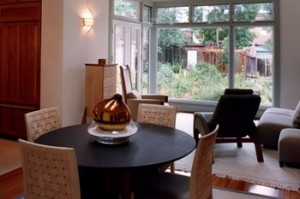
Modern addition maintains historic charm of Washington,
DC Italianate Victorian home
When Wentworth worked with the owners of a 1870s Italianate Victorian to renovate the kitchen and design and build a new one-story family room addition, our team worked closely with the staff of the DC Historic Preservation Office. The design, which was sensitive to the overall historic nature of the home, removed a kitchen wall and opened up the space to the new family room.
The design also included a new first floor powder room that was sorely missing from the original 1870s floor plan. The 25′ wide lot, along with the new home addition, provides expansive views of the oversized rear garden. The brick addition blends nicely with the original stucco building, and the modern design the homeowners wanted provides an elegant contrast to the original Victorian building.
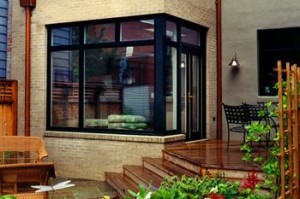
A brick addition provides contrast to home’s original stucco
If you own a detached home with a large lot in Washington, DC, it is most likely zoned R-1B. 1958 zoning regulations require that building lots be a minimum of 5,000 square feet. Under R-1B zoning rules, a residence can cover 40% of the lot and requires an 8′ wide side yard as well as a 25′ rear yard. Many neighborhoods have Building Restriction Lines (BRL) at the front yard, which are often 15′ and means your building cannot encroach into that front yard.
R-1B zoning regulations were applied when we completed a rear home addition for residents in the Spring Valley neighborhood of DC. The addition accommodated a family room, kitchen and a new master suite on the second floor. The home’s original small kitchen (8′ x 12′) was remodeled as a home office. A simple gable roof, double hung windows, clapboard siding and brick base help preserve the original brick colonial revival home.
Adding to your home can be a rewarding experience and can certainly improve the quality of your life, as well as the functionality and value of your home. To ensure you alleviate home addition zoning-related headaches and achieve a smooth process from start to finish, contact Wentworth today!


